
|
|
#1 |
|
Участник
|
Gareth Tucker: Microsoft Dynamics Marketing Functional Overview
Источник: http://garethtuckercrm.com/2014/08/0...onal-overview/
============== The Spring 14 release for Dynamics CRM sees the first release of the new Microsoft Dynamics Marketing application. The functionality originates from the Marketing Pilot product that Microsoft acquired back in October 2012. This current release reveals a re-skinned application that looks right at place alongside Dynamics CRM: 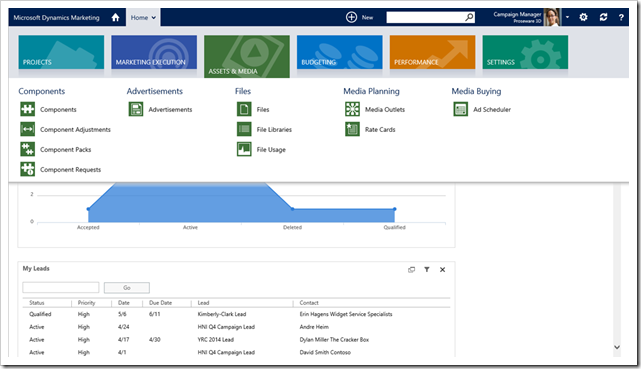 It is important to understand though that Microsoft Dynamics Marketing is still very much a separate application. It is a cloud offering that you can subscribe to by itself or as an add-on to either your monthly CRM Online subscription or your CRM On-premise license. It has native integration to Dynamics CRM to synchronize common elements of their respective data models. Where the Marketing functionality that we have historically known in Dynamics CRM only skims the surface this new application delivers a lot of business process automation for a Marketing Department. Here’s a useful comparison of the two: 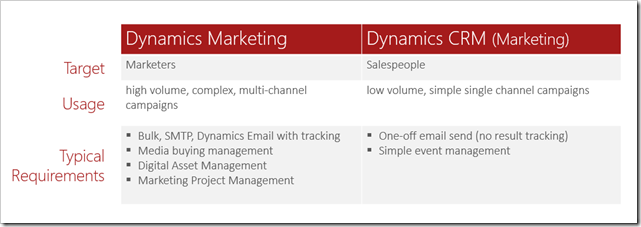 When I first heard of Microsoft Dynamics Marketing I envisioned it would offer functionality along the lines of Click Dimensions, providing mass email marketing and landing page type functionality. But there is more under the hood than that. It tackles a number of internal business processes within the Marketing Department – such as requests and approvals, planning and execution, digital asset management, event management, media buying, etc. And what I particularly like is that it makes the most of being a cloud offering and opens up the usage scenarios to include not only the internal Marketing Team but also allows ‘internal customers’ in the organization to login into a portal experience to interact with the Marketing Department and the same for external vendors/contractors/customers. The product is applicable to 2 different types of end customer:
Here’s a very quick run down on the functionality provided by the new Microsoft Dynamics Marketing solution. This will save you from having to sit through the online training… Account and Contact Management The ability to track profiles and record interactions with:
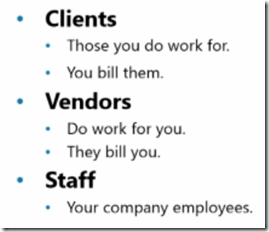 Work Management The ability to break down the work your Marketing organization is performing into:
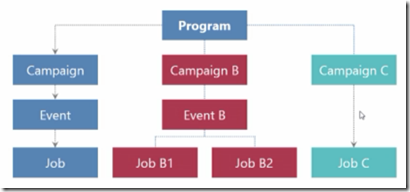 The ability to create and assign Tasks. And the ability to define Templates for standardized processes (Job Templates). There is lots of rich functionality in here, allowing you to sequence Tasks, automatically update Job status based on Task completion and a slick UI for reallocating the pre-assigned durations on Tasks when the overall Job duration needs to be compressed. Request Management The ability to define Job Request templates and publish those to an online catalog for internal customers to use when requesting work from the Marketing department: 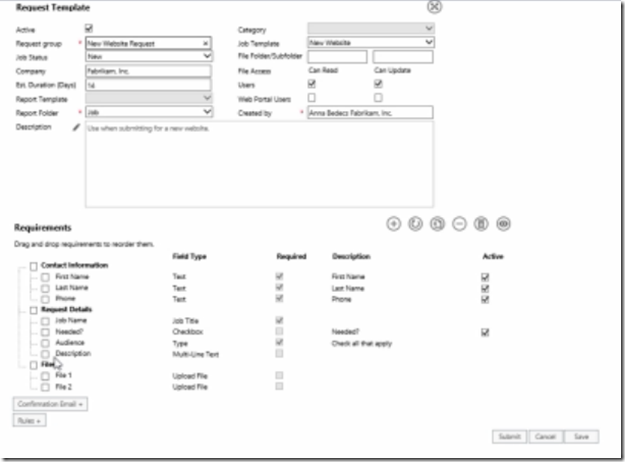 Digital Asset Management The ability to manage folders of Video, Audio and Image and document files. These can be digital assets that are being developed or libraries of finished products: 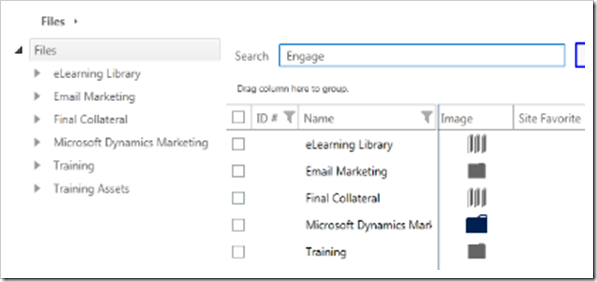 Configurable review and approval processes processes for digital asset development – such as the development of a Landing Page or Brochure or Promotional Video. Includes tools to markup an image / video with highlights, callouts, notations, etc:  Supports both internal and external users so that design and review processes can be performed internally or externally – e.g. if you outsource collateral development your marketing vendor can submit draft’s via their external access to this tool and you can provide your marked up response. 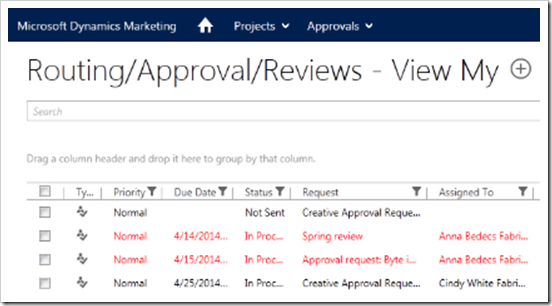 Event Management The ability to define Event Templates to standardize the definition of Events. Includes the configuration of Event Briefs and standard Tasks. The ability to define Venues and Venue Facilities. The ability to plan Events and Event Sessions. The ability to define Speaker, Food & Beverage and AV requirements. The ability to track invites, acceptance and attendance (simple tracking feature). The ability to manage Registrations (more comprehensive functionality). The ability to load a Marketing List into an Event. 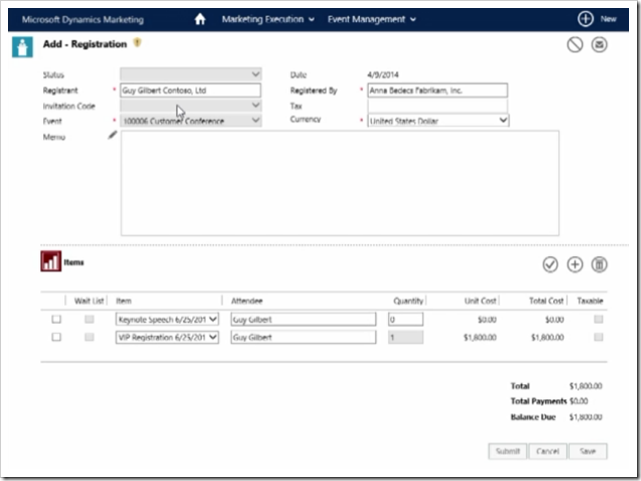 Marketing Financials Management Microsoft Dynamics Marketing includes lite ERP-style functionality to enable a Marketing company/division to process purchase orders, invoices, quotes, etc., Specifically: The ability to define products, expense items, services, etc. and to associate these to GL Accounts. The ability to define rate cards for items / services. The ability to execute and manage a Request for Quote (RFQ) process to seek bids from external vendors. The ability to build estimates and deliver quotes (relevant when MDM is used by a Marketing Agency that serves external customers). 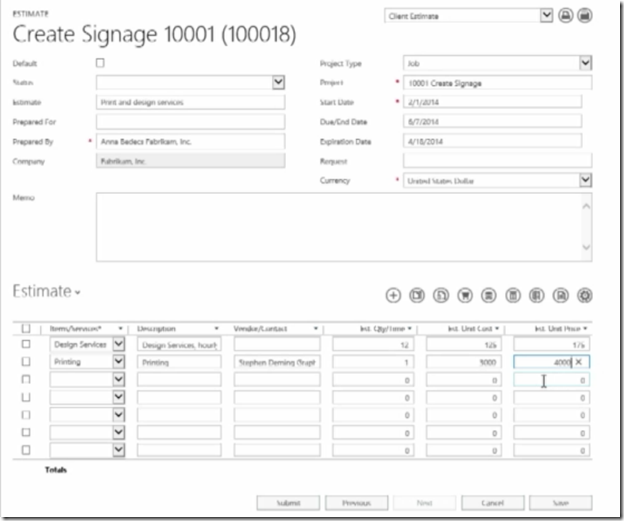 The ability to generate Purchase Orders and to then post expenses to the campaign based on the PO once you receive the Invoice. 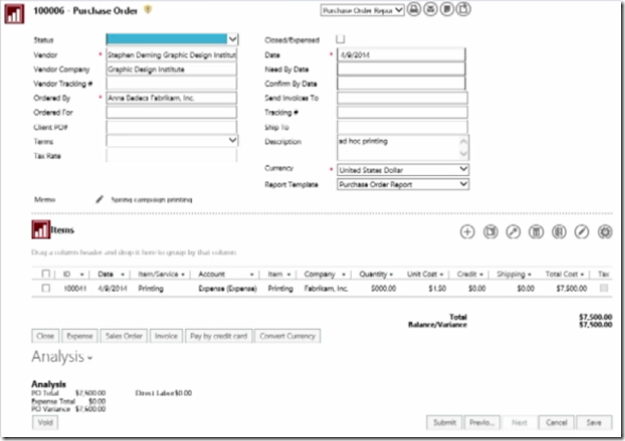 Timesheets A Time Card feature allows internal users to code their time to various Marketing initiatives to add those labor costs to the Campaign. If the Marketing Department is serving external customers these time entries can feed the billing process. The feature can also be utilized by external contractors, providing a means for them to log their hours with you, feeding how you pay them. 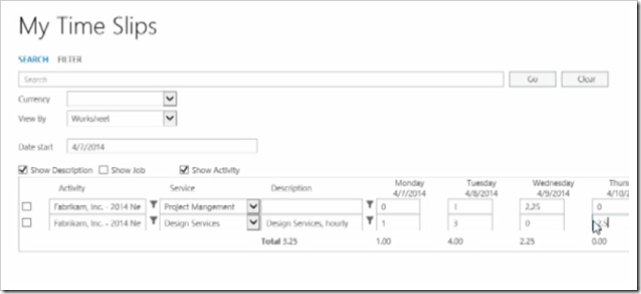 Media Buying & Media Planning Contact & Account Management around Media Vendors. The ability to define the Media Vendors, Outlets (advertising channels), Markets and Segments (geographic/demographic groups served by each Outlet) that you interact with. The ability to maintain Rate Cards for the pricing you have negotiated with the Media Vendors you purchase from. Including the definition of Day Parts to represent advertising windows such as “Weekday Mornings”, relevant to Television and Radio advertising.  The ability to create Media Orders (think Purchase Order) and then expense those. Optional ability to invoice Media Orders (if you are an Agency with external customers). The ability to define a Media Plan – i.e. the specification of individual advertising spots across channels, across a period of time, that cumulatively represents your multi-channel advertising plan for a particular campaign. This can be used to forecast the cost and to generate the purchase orders. There are useful wizards and bulk data entry tools to ensure you do not need to key each individual spot. 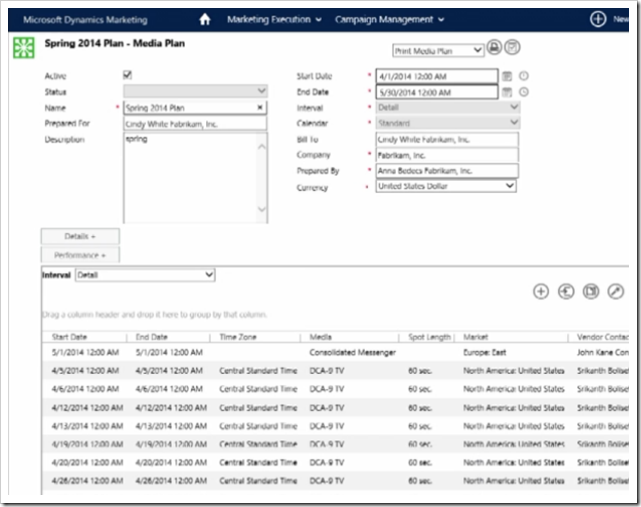 List Management The ability to define Marketing Contacts (specific end customers/prospects that you wish to send bulk communications to) and Marketing Lists. Support for Static and Dynamic Lists as well as List synchronization with Microsoft CRM. The ability to define black lists / opt out lists. The ability to publish lists to a Subscription page for self service subscription management. And the ability to modify the appearance of this subscription page. Includes the ability to enable self service update of contact details. Email Marketing The ability to define Email Templates including support for manual creation, creation via copy and paste of HTML, support for embedded images and for embedded contact fields. The ability to send bulk email as part of a campaign (select an email template, modify it for this particular message, select your marketing list, send). The ability to view metrics and detailed information on email blasts: opens, clicks, forwards, unsubscribes, etc. The ability to define rules to constrain the number of emails your customers will receive per week / month (either globally, or per campaign). The ability to define dynamic content in emails so that when mailing multiple lists each list receives personalized content – e.g. subject line, email body, images, links. Social The ability to register Facebook and Twitter accounts and then post to those from within MDM. Click-through on URLs included in posts will be automatically tracked. Budgets The ability to define budgets at a wide range of levels: company wide, campaign, channel, etc. Comparison views of budget to actual, with drilldown. Web Site Visitor Tracking Generation of scripts for embedding into web pages to push visitor information to MDM. Track visitors in MDM. Tracked as anonymous or, if identified, tracked against Contacts. Landing Pages Configurable landing pages for Lead capture. Able to select which fields are displayed / required. Able to automatically associate new Leads to a List. Built in support for CAPTCHA. Lead Scoring Configurable rules to assign scores to leads: e.g. submitting their details on a landing page = 10 points. Add value to Lead based on fit: e.g. if they indicate they are in one of our 3 key industries add another 15 points to their lead score. If they are already a target for a particular campaign add another 20 points. Ability to have scores automatically depredate over time: e.g. decrease by 1 point every day (to represent their declining value as we fail to respond). Ability to grade Leads based on the Score assigned, to place Leads into bands and give those bands an identifier – e.g. a Lead Score between 51 and 100 places the Lead in the “Hot Leads” Grade. Integration between MDM and CRM that pushes Leads of a certain Grade into CRM. Lead Assignment Rules Configurable rules that will drive assignment of Leads. Multiple conditions can be defined – e.g. Industry match, Lead Score threshold, Campaign association. Rules are executed in this sequence: Lead Creation –> Lead Scoring –-> Lead Assignment. Multiple rules can be defined. They are executed in top to bottom order, allowing you to define layers of assignment, implementing conditional logic. Campaign Automation Drag & drop designer for building out campaign automations. Includes branching logic, wait timers, triggers and copy and paste editing capability. Similar to building workflows in CRM but a much simpler experience. Example: Send an email blast to a list, if a recipient opens the email wait 5 days and then send them a second email. If they arrive at a Landing Page register them for an Event. 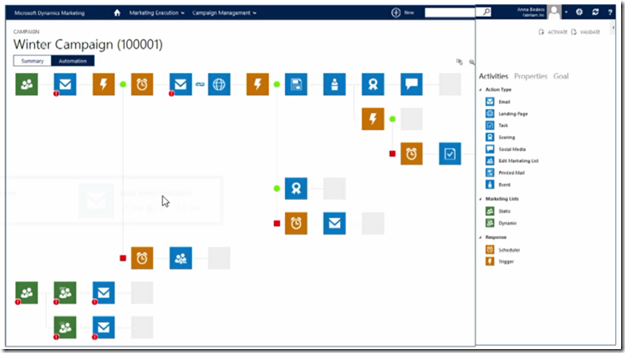 Reporting & Analytics The ability to key or import results against your Campaigns – e.g. leads, orders and invoices. MDM calculates conversion rates based on targets and results. Includes Return on Marketing Investment (ROMI) reports. Reports available on Media usage. To do list views, in calendar format with filtering and due/overdue visual indicators. A large number of out of the box SSRS reports are included. Access is granted to users on a report by report basis. MDM has its own reporting UI, with filters and export options, which surfaces SSRS reports. Some PowerBI charts are included and can be embedded into the Home page. They are hosted on a SharePoint server, you are essentially iframing them into MDM. Basic Extensions User fields are available throughout the data model that can be enabled to appear on the forms. They reside in a User fields area but you have a little bit of control over how they are presented within that are and whether they are required or not. Field labels of out of the box fields and user fields can be customized. To Learn More… There are 2 eCourses available on Microsoft’s IT Academy site Search for these Courses: 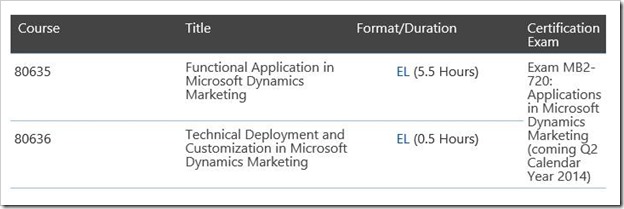 The Functional course has over 5 hours of content broken up into 12 modules and is a mixture of videos (slides and demos presented by a trainer), test your knowledge questions and interactive walkthroughs where you are guided where to click on a mock screen, to execute a scenario. Overall, its fairly effective and will get you grounded on the basics:  Источник: http://garethtuckercrm.com/2014/08/0...onal-overview/
__________________
Расскажите о новых и интересных блогах по Microsoft Dynamics, напишите личное сообщение администратору. |
|
|
|
|
| Опции темы | Поиск в этой теме |
| Опции просмотра | |
|